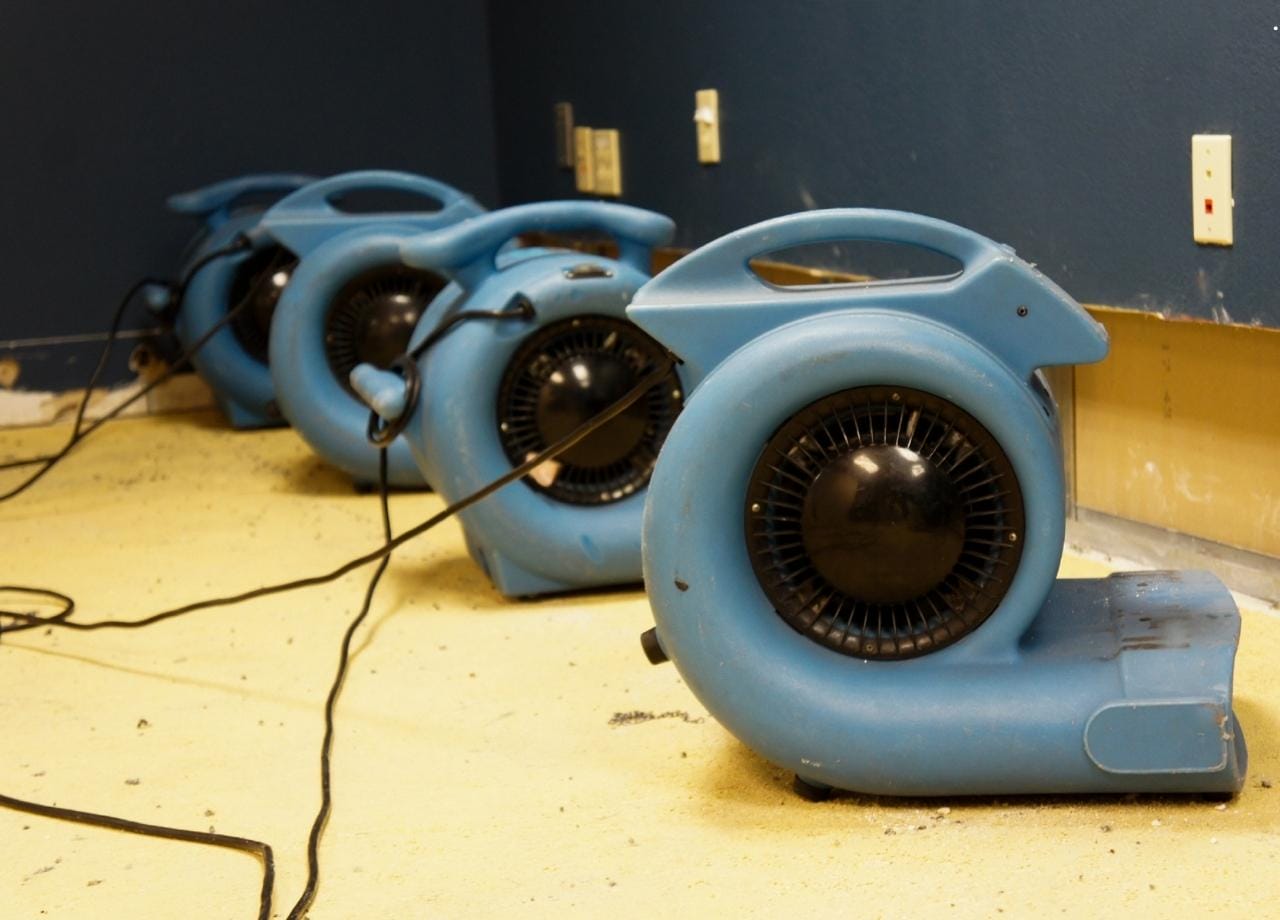When a home or building suffers water damage, two essential steps must be taken to return the structure to its original condition: water mitigation and water restoration. Although these terms are often used interchangeably, they refer to distinct phases of the recovery process. Understanding the difference between them can help property owners make informed decisions during what is often a stressful and time-sensitive situation.
At First Coast Contracting, we’re frequently called in after emergencies to help homeowners across Jacksonville and St. Augustine navigate these processes. Our team is trained to handle both mitigation and restoration, ensuring a seamless transition from immediate response to full recovery.
Table of Contents
What Is Water Mitigation?
Water mitigation is the first response to water intrusion. The goal at this stage is to stop the spread of water and minimize the initial damage. This involves removing standing water, drying affected areas, and protecting the structure from further exposure. Mitigation is about control and containment. The work must be fast, precise, and based on an understanding of how moisture travels and settles.
Mitigation professionals use a combination of industrial equipment and strategic planning. High-powered pumps, air movers, dehumidifiers, and moisture meters are common tools. In many cases, damaged materials such as drywall, insulation, and flooring must be removed immediately to prevent mold growth or structural weakening. Barriers may also be set up to isolate affected areas and reduce cross-contamination.
Time is critical. The longer water sits, the more damage it causes. Within hours, porous materials can absorb moisture, leading to swelling, warping, and decay. If left unchecked, water can penetrate framing, subfloors, and electrical systems, making restoration far more complex and expensive.
What Is Water Restoration?
Water restoration is the process of repairing and rebuilding after the water has been removed and the area has been dried. While mitigation focuses on preventing damage, restoration is about fixing what was harmed. This includes structural repairs, replacing drywall or flooring, repainting, and restoring the space to its pre-loss condition.
Restoration work may range from minor cosmetic fixes to major reconstruction. In homes with extensive damage, this phase might include rebuilding entire sections of a room, rewiring electrical components, or addressing foundational concerns that emerged due to prolonged moisture exposure. The goal is not just to make the area look good again, but to ensure it’s safe, sound, and functional.
The restoration phase also includes cleaning and sanitizing the space. Even after drying, contaminants from floodwaters, sewer backups, or other sources must be dealt with properly to protect the health of occupants. Specialized cleaning agents and antimicrobial treatments are often part of this step.
How the Two Processes Work Together
Mitigation and restoration are separate processes, but they’re deeply connected. One cannot be effective without the other. A job that begins with prompt and thorough mitigation will set the stage for a smoother and less costly restoration.
A common mistake homeowners make is to assume that drying out the area means the job is done. But unless the damage is repaired and materials are restored or replaced, the property remains compromised. Likewise, jumping into restoration before the structure is fully dry can lead to recurring mold problems, odor issues, and additional repairs down the line.

That’s why coordination between the mitigation and restoration teams is essential. Ideally, both phases are handled by the same contractor or a team that works closely together. This ensures no steps are missed, and that each decision is made with the entire recovery process in mind.
Insurance Considerations
Most homeowner’s insurance policies cover both water mitigation and restoration, but the documentation and approval process can be detailed. Insurance carriers typically require proof that immediate steps were taken to prevent further damage. That makes proper mitigation not only necessary for structural safety, but also critical for successful claims.
During mitigation, every action should be documented—what was removed, when drying began, moisture readings, photos of damage, and notes on affected materials. This documentation will support the restoration phase and justify repair costs. Working with a contractor who understands insurance processes and communicates effectively with adjusters can make a major difference in how quickly and smoothly the project moves forward.
The Role of Timing and Professional Expertise
The distinction between mitigation and restoration also highlights the importance of acting fast and relying on skilled professionals. Water damage is rarely just surface level. It often hides in walls, beneath flooring, or behind cabinetry. Trained technicians use tools that detect hidden moisture and develop a plan based on how water interacts with different building materials.
Without this knowledge, property owners run the risk of overlooking critical areas or using equipment improperly, which can cause long-term damage. Restoration, in particular, requires more than just basic handyman skills. It involves understanding building codes, structural design, and safe material handling.
Additionally, water damage isn’t always caused by the same sources. Flooding, burst pipes, roof leaks, appliance malfunctions, and sewer backups each require a different approach. A team experienced in both mitigation and restoration will know how to tailor their response based on the type of water and the materials affected.
Why the Difference Matters to Property Owners
Knowing the difference between water mitigation and restoration gives homeowners more control during a chaotic time. It helps set realistic expectations, improves communication with contractors, and can prevent costly delays.
When choosing a contractor, it’s smart to ask how they handle both phases of the process. Do they provide emergency services right away? Do they handle restoration internally or bring in a different team? Are they familiar with insurance protocols? Getting these answers upfront ensures you won’t be left scrambling when the work shifts from one phase to the next.
In the end, both mitigation and restoration are essential parts of recovering from water damage. Skipping either step—or cutting corners—can lead to larger problems down the road. With the right help, you can protect your investment and return your home to a safe, livable condition without unnecessary delays or expenses.


